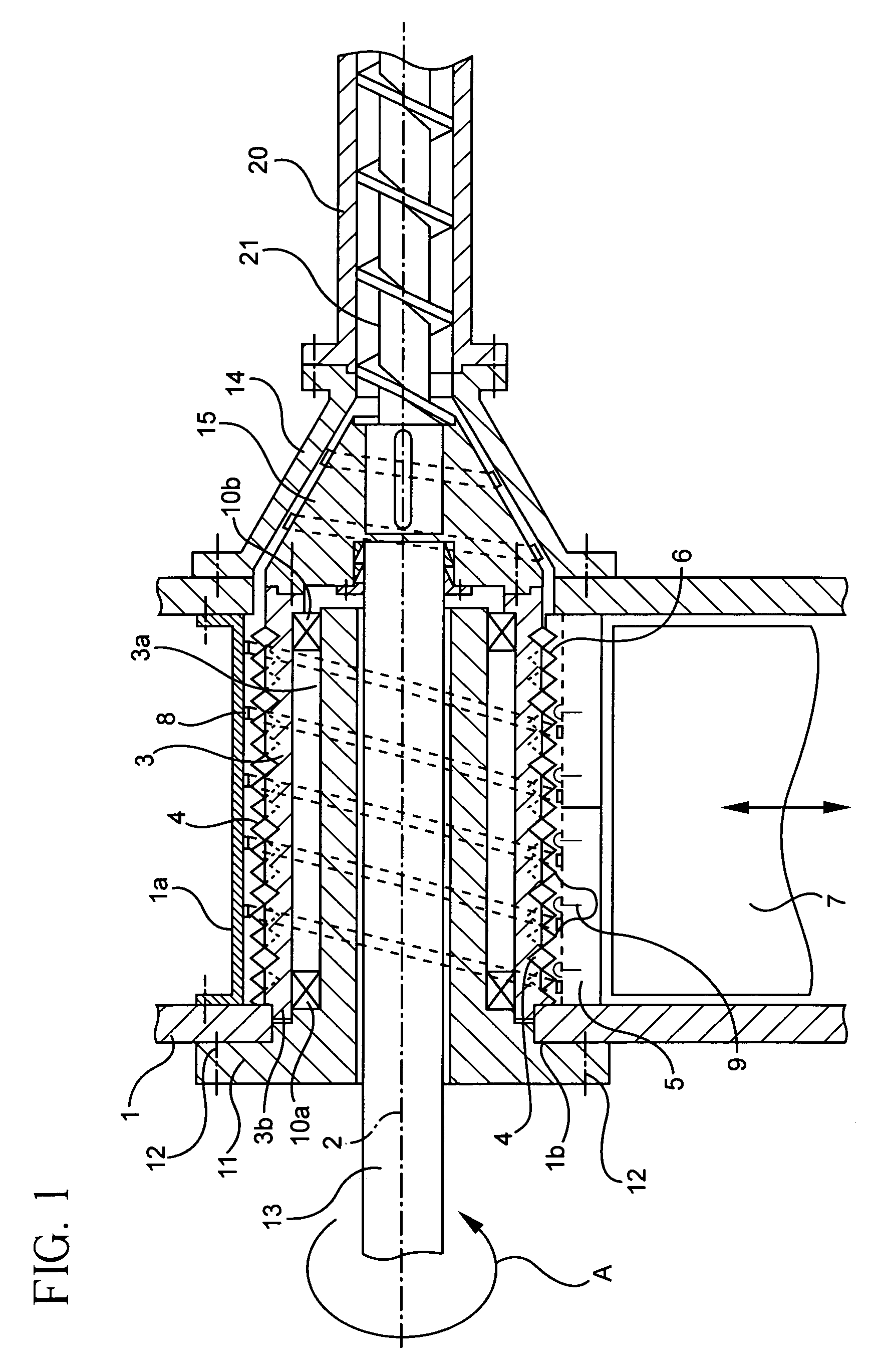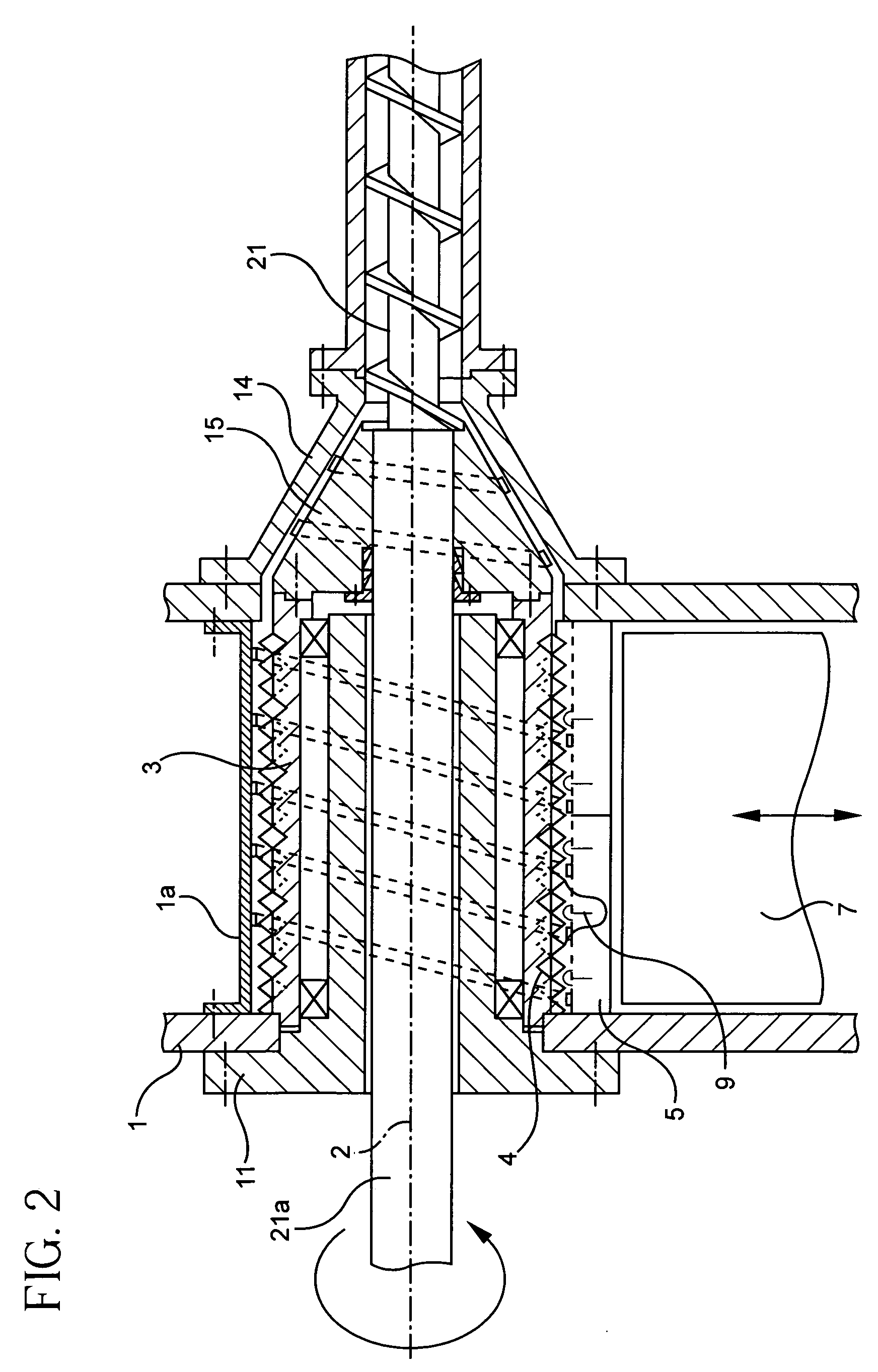Device for the comminution of materials
a technology of loosely packed materials and compacting devices, which is applied in the direction of application, grain husking, grain treatment, etc., can solve the problems of affecting the conveying effect of synthetic materials, so as to facilitate the replacement of parts and facilitate the maintenance of the device, the effect of facilitating the maintenan
- Summary
- Abstract
- Description
- Claims
- Application Information
AI Technical Summary
Benefits of technology
Problems solved by technology
Method used
Image
Examples
Embodiment Construction
[0027]First with reference to FIG. 1, there is illustrated, in longitudinal section, a first embodiment of the device according to the invention for compacting loosely packed materials, in particular synthetic materials. Said device comprises a casing 1, 1a, in which a shredder / conveyor rotor body configured as a shredder shaft 3 is rotatably arranged around an axis of rotation 2 (arrow A). The shredder shaft 3 has a plurality of mutually offset knives 4 at its peripheral surface, which may be arranged helically around the periphery. Opposite to the rotating knives 4 there are stationary knives 5 extending inwardly from the casing 1a so that between the knives 4 and 5 narrow shear gaps 6 are formed.
[0028]In a manner which is known and therefore not illustrated, material to be shredded is supplied to the shredder shaft 3 via a feeding hopper, using suitable conveyor means such as conveyor belts, a roll feeder, a lifting and tipping device or by manual charging. The material can there...
PUM
| Property | Measurement | Unit |
|---|---|---|
| angle | aaaaa | aaaaa |
| current consumption | aaaaa | aaaaa |
| temperature | aaaaa | aaaaa |
Abstract
Description
Claims
Application Information
 Login to View More
Login to View More - R&D
- Intellectual Property
- Life Sciences
- Materials
- Tech Scout
- Unparalleled Data Quality
- Higher Quality Content
- 60% Fewer Hallucinations
Browse by: Latest US Patents, China's latest patents, Technical Efficacy Thesaurus, Application Domain, Technology Topic, Popular Technical Reports.
© 2025 PatSnap. All rights reserved.Legal|Privacy policy|Modern Slavery Act Transparency Statement|Sitemap|About US| Contact US: help@patsnap.com



